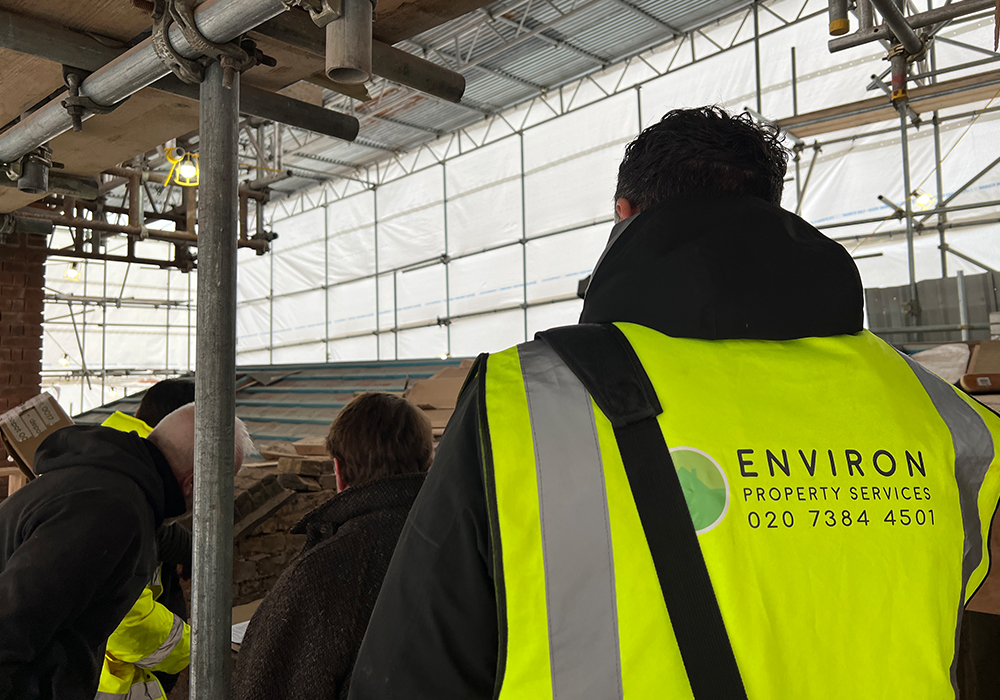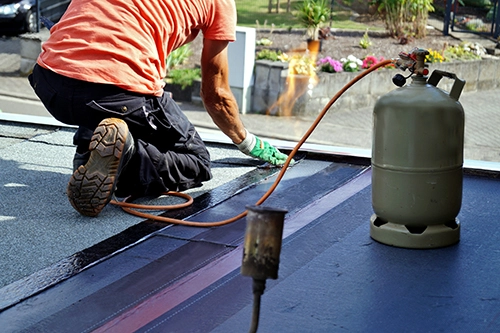- About Us
- Services
- Blog
- Contact
Need a quote?
When it comes to commercial and residential roofing, the debate between EPDM (Ethylene Propylene Diene Monomer) rubber roofing and single-ply roofing options such as TPO (Thermoplastic Polyolefin) and PVC (Polyvinyl Chloride) is ongoing. These materials have become popular choices for their respective benefits, but how do they stack up in terms of durability, cost, and installation? Environ Roofing Services offers an expert comparison to help property owners make informed decisions tailored to their specific needs.




EPDM Rubber Roofing: Known for its remarkable durability and longevity, EPDM rubber roofing can last up to 50 years with proper maintenance. Its resilience against extreme temperatures, UV radiation, and harsh weather conditions makes it an ideal choice for buildings in varying climates. Additionally, EPDM's flexibility prevents it from cracking or splitting, ensuring a reliable performance year after year.
Single Ply Roofing (TPO & PVC): Single-ply roofing membranes, particularly TPO and PVC, are also celebrated for their durability. These materials are resistant to chemical exposure, punctures, and tears. TPO, in particular, is noted for its heat-reflective properties, which can enhance energy efficiency. PVC roofing is highly resistant to fire, chemicals, and grease, making it suitable for restaurants and industries with specific environmental considerations.
EPDM Rubber Roofing: One of the most cost-effective roofing options on the market, EPDM offers a lower initial installation cost. While its dark colour may absorb more heat, potentially increasing cooling costs in warmer climates, the initial savings and longevity of the material often outweigh these concerns.
Single Ply Roofing (TPO & PVC): Initially, TPO and PVC roofing systems may come with a higher price tag than EPDM. However, their reflective properties can lead to significant energy savings over time, especially in sunny environments. Considering their durability and the reduced need for repairs, the long-term investment in TPO or PVC roofing can be highly cost-effective.
EPDM Rubber Roofing: The installation process for EPDM roofing is relatively straightforward and quick, contributing to its lower initial cost. Large sheets can cover extensive areas with few seams, reducing the risk of leaks. However, the installation quality heavily depends on the expertise of the roofing contractor.
Single Ply Roofing (TPO & PVC): TPO and PVC roofing materials require specialised welding equipment to seal the seams, demanding a higher skill level from the installers. While this may contribute to a higher initial installation cost, the strong, watertight seams created during the process can provide superior protection against leaks and water damage.
Choosing between EPDM rubber roofing and single-ply roofing options such as TPO and PVC depends on various factors, including building requirements, and budget.
Environ Roofing Services specialises in providing tailored roofing solutions, helping clients navigate these choices to find the best fit for their properties. With our expertise, you can ensure that your roofing investment offers the durability, cost-efficiency, and installation quality that meets your needs.
Whether you lean towards the traditional resilience of EPDM or the modern advantages of single-ply roofing, Environ Roofing is here to guide you every step of the way.
It depends on the construction, but the minimum weight a flat roof must be capable of bearing is 300lbs. This refers to a concentrated weight where a load is positioned on just one area of the roof. So, for example, a commercial flat roof can approximately support a 300lb HVAC unit in a 2.5×2.5ft single space.
If you opt for a flat roof anywhere on your property, remember that it comes with a need for proper maintenance. Low-slope roofing London-wide should be checked every six months or so, or after spells of bad weather, to spot any signs of damage. No matter how small, these should be addressed before they escalate. Remove any debris (leaves, twigs and so on) regularly to avoid these blocking the gutters and allowing water to pool and stand on the roof.
If there are trees in the close vicinity, keep them cut back to reduce the amount of foliage that falls on your flat roof. And check internally for signs of moisture, dampness or water damage on a regular basis. Spotting problems early means resolving them will be cheaper in the long run.

Building a flat roof can be done in three ways. The simplest and most cost-effective choice for levelled roofing London-wide is to construct a warm roof where a roofing membrane is placed over the insulation that keeps the timber structure warm. Another option is to create a cold roof where insulation is positioned between the rafters under the ply roof covering. This is commonly applied to flat-roofed extensions.
The third method is the hybrid roof that contains diverse elements. Their designs require a gap of ventilation above a warm roof to prevent excess moisture within the roof structure.
If you’re looking for flat roofing local contractors, don’t just select the first firm you come across. Find a roofing company that’s been in business for a while and can demonstrate a good track record in installing, repairing, and replacing flat roofs specifically. Ask for recommendations from your own network or from a local trade association. If you need refurbishment work done to 50% or more of your roof, you’ll need a roofing contractor who can self-certify their work under the Competent Person Scheme. Otherwise, the Building Control department at your local authority will need to approve the job before it begins.
Ask whether they are covered by liability insurance and how long they’ll guarantee the work they will carry out. And never just opt for the cheapest quote unless you’re quite sure they’re the best company for the job. You can’t afford to compromise on your roof as the structural integrity of your property depends on it.
Ensuring your flat roof will comply with building regulations before installation can save property owners time, money and stress. First, the roof must have a slope of around 1:80, with water draining away to one or two roof edges. Waterproofing must be extended up to the adjacent walls with at least 150 mm from the surface of the roof.
Contractors must install ventilation in cold roofs. For warm roofs, the deck must be bonded with a VCL. The roof should have the capacity to withstand strong winds and be sturdy enough to take an individual’s weight. Finally, check whether planning permission is needed. Typically, this is only required if you live in a conservation area or a listed building, or are making significant changes to an existing roof.
If you’re looking for top roofing solutions at competitive rates, check out our range of roofing services at Environ Roofing Company London. To get started, call one of our representatives today!

